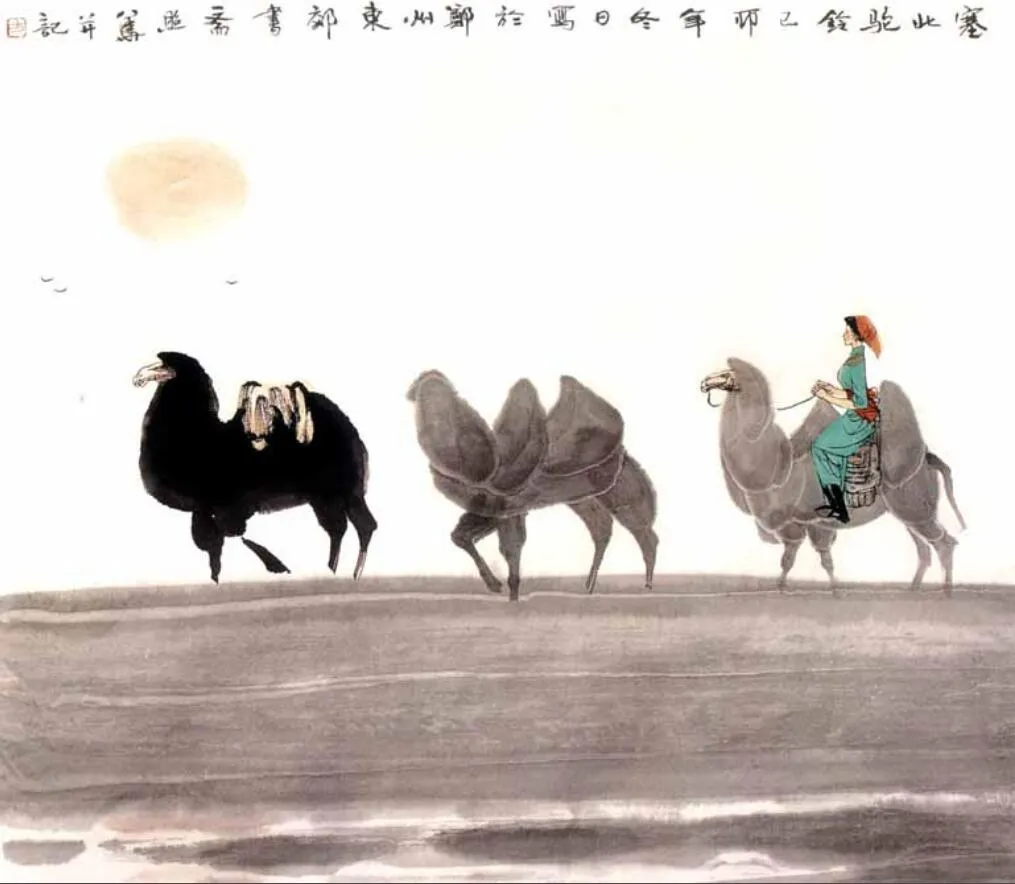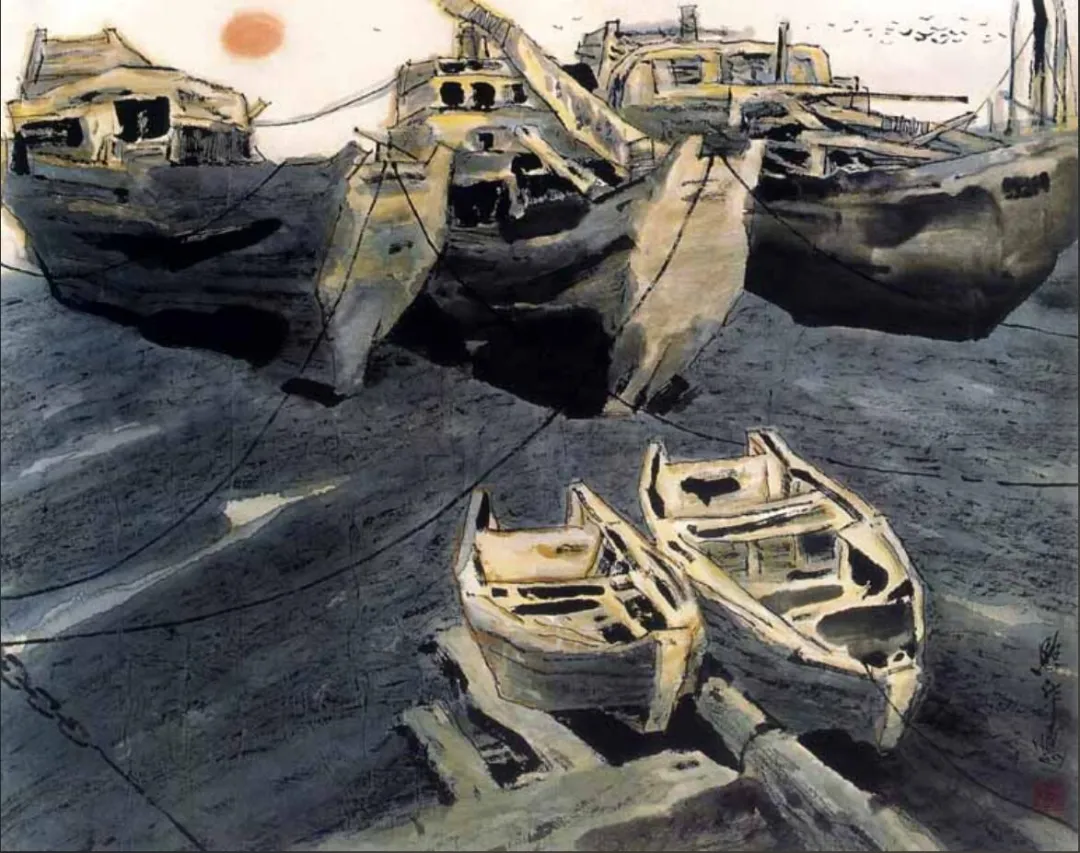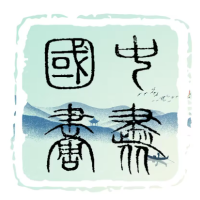方照华,丙戌冬月降于惠安。其身承故里之清雅,兼得中原之厚重,双重文化交融,成其独特风格,清雅中见沉厚,以画颂中原,咏厚土深情。

方氏之作,域外风情与古典人物虽涉,然中原风物与历史尤为所重。笔调或婉转,或凝练,皆写现实之情,抒心中之感。福建之眷恋,海峡之情思,惠女之钟爱,皆藏于笔端。离乡初年,因路远车稀,归乡不易。岁月易逝,唯乡音乡情不改,一片赤诚,终归故土。画中惠安女,姿态万千,情趣盎然。离乡近半世纪,故土山水,人情风物,皆铭刻心中,成一生不灭记忆。至九十年代,因公多返惠安,久积思乡情得以抒发。方氏言,闽南勤苦之风,常激其于中原辛劳耕耘数十载,创作不辍,艺业日隆。
方照华幼年长于惠安,彼地岁月,烙印心间。惠安女之姿影,常萦怀中,其善美乐观,能耐劳苦,淡然一笑,风采毕呈。方氏以丹青绘之,笔底惠女,婀娜婉转,兼具沉厚之韵。其初作间,偶见今风化迹,方氏故里亦评:“婀娜之姿,沉酣之味,皆藏于笔。”其水墨画作,涉足传统,画中人物与景致,匠心独运,意蕴深长。方照华以惠安女为题,画中姿态,清婉而韧,神情自成,情景交融。墨线勾勒,婀娜尽显,浓淡相宜,韵味深藏。其画面布局,繁简相辅,虚实相生,既承水墨古韵,亦融时代新意。惠女微笑,淡然含情,似隐似现,观者如临其境,静中自有深意。




方氏作人物,重在传神,非止形似,而于笔墨中写意其内心。画风清丽,沉厚其中,娟秀之外,刚毅自现。其笔少而意多,留白广袤,如山海之无垠,令人遐思。笔墨轻重,运转如流,线条或柔或劲,皆得其妙。此风格古今兼融,自成一体。观其惠安女系列,妙手天成,既为乡土情思之寄,亦为女性坚韧之颂。意蕴深远,承国画传统,融西画精髓,形神相生,古今贯通,堪为艺林之珍。




方照华涉国画道,造艺之因,偶必相生。初以油画成名,因故抽暇持笔试水墨,既为联络四方,亦为延艺脉。时移世易,水墨渐成所好,终难弃舍。必然者,审美深处之根基如是。昔有油画转入丹青者,皆潜藏对古韵之恋,适时而发,不可遏止。方氏自言:“东西艺道之对比,令我重省此土,久承其蕴。长年熏染,东方之韵,早已滋生,今终绽放。”



中西画道,虽表异而神通,皆借形传意,寄情于象。西洋之画,重块面造型与色彩交响;国画之妙,在于笔线之曲折、墨色之虚实、矿彩之点染、留白之布局,境界自成。两者美学观虽异,内涵却隐通,然其理纷繁,难尽言。方照华于艺道,取中西融合之途,造型功力深厚,艺境宽广。勤研笔墨,探其妙理,求笔墨与块面造型之合,人物形神兼备,线条劲健而灵动,墨色深沉且含韵。方氏不独擅长宏篇巨制,于写生小品亦自见妙手,点染皴擦,运笔如神。近岁以来,方氏艺风愈显独具,乃多年探索而得,使“西为中用”之道臻于大成,令人叹服。
方照华心怀使命,志在探艺,前路广远,愈行愈阔。


Fang Zhaohua: Embracing the Homeland Through Art, Capturing Beauty and Goodness in His Brushwork
Born in the winter of the Bingxu year in Hui'an, Fang Zhaohua embodies the elegance of his homeland and the profoundness of the Central Plains. The blend of these two cultures has shaped his unique style, where elegance intertwines with depth. Through his paintings, he praises the land of the Central Plains and expresses his deep affection for it.
Fang’s works cover a wide range of subjects, from foreign landscapes to classical figures, yet he places particular emphasis on the scenery and history of the Central Plains. His brushstrokes, whether lyrical or concise, always convey the emotions of reality and the feelings in his heart. His nostalgia for Fujian, his longing for the strait, and his love for the Hui’an women are all vividly portrayed in his paintings. Time may pass, but his connection to his homeland remains unchanged, with a sincere heart always returning to its roots. The Hui’an women in his paintings are depicted with a variety of postures, full of charm and vitality. Although he has been away from his hometown for nearly half a century, the mountains and rivers, the people and customs of his homeland, are deeply imprinted in his heart, becoming an indelible part of his life. In the early years after leaving home, due to the difficulty of travel, his visits to his hometown were rare. However, since the 1990s, his opportunities to return to Hui'an for meetings and events have increased, allowing him to express the long-suppressed longing for his homeland. Fang often says that the hardworking spirit of the people in southern Fujian has always inspired him, driving him to work tirelessly in the Central Plains for decades, continually creating and growing in his art.
Fang Zhaohua spent his childhood and youth in Hui'an, and the time he spent there is deeply etched in his memory. The image of the Hui’an women, with their beauty, optimism, and endurance, has always been in his heart. Their grace, coupled with a quiet strength, is captured in his paintings with a gentle yet powerful brush. Fang’s early works sometimes reflect traces of modern influence, and his hometown has noted: "The elegance and profoundness of the Hui’an women are fully expressed in his brushwork." His ink paintings, while rooted in tradition, display innovative treatment of figures and landscapes, revealing his meticulous craftsmanship and deep artistic vision. In his depictions of the Hui’an women, their postures are both graceful and resilient, their expressions vivid and lifelike, blending seamlessly into their surroundings. His lines are precise, his use of ink measured, creating a rich and enduring atmosphere. The composition of his paintings balances complexity with simplicity, light with shadow, merging the ancient spirit of ink painting with contemporary sensibilities. The smiles of the Hui’an women, subtle and filled with meaning, seem to invite the viewer into a world of quiet reflection, where profound emotions lie beneath the surface.
In his portrayal of figures, Fang focuses on capturing the spirit rather than merely replicating the form. His paintings, though delicate, are imbued with depth; beneath the graceful surface lies a strength that emerges subtly. His use of minimal strokes to convey profound meaning, combined with vast expanses of blank space, creates a sense of boundless potential, inviting contemplation. The weight and flow of his brushwork, whether soft or bold, are masterfully executed, making his style a harmonious blend of ancient and modern. His series on the Hui’an women, with its effortless grace, serves as both a tribute to the enduring spirit of his homeland and a celebration of the resilience of women. The profound layers of meaning in his work, rooted in the tradition of Chinese painting while incorporating elements of Western art, showcase a seamless fusion of form and spirit, earning him a revered place in the world of art.
Fang Zhaohua’s journey into Chinese painting was a confluence of chance and necessity. Initially recognized for his achievements in oil painting, circumstances led him to explore ink painting in his spare time, both to connect with broader circles and to continue his artistic practice. Over time, his affinity for ink deepened, and it became an inseparable part of his artistic expression. This shift was not merely circumstantial; it was rooted in a deep-seated aesthetic foundation. Like many who transitioned from oil to ink, Fang had long harbored a love for the ancient traditions, which, once awakened, became an unstoppable force. Fang himself remarked, "The contrast between Eastern and Western art led me to reevaluate this land, its long-standing heritage. The years of exposure to traditional art had long nurtured an affinity for Eastern aesthetics, which has now fully blossomed."
The artistic languages of Chinese and Western painting, though different in form, share a common essence, both using imagery to convey thoughts and emotions. Western painting emphasizes block shapes and the symphony of colors, while the beauty of Chinese ink lies in the undulating brushstrokes, the interplay of ink’s intensity, the use of mineral pigments, and the strategic placement of empty spaces, each creating a unique atmosphere. While their aesthetic philosophies differ, their core meanings resonate with one another, though the underlying principles are complex and difficult to fully articulate. Fang Zhaohua has chosen to integrate these two traditions in his work, with a solid foundation in form and a broad artistic vision. He diligently studies the subtleties of brush and ink, striving to harmonize these with the structural elements of block composition, achieving a perfect balance of form and spirit. His brushstrokes are both forceful and graceful, his ink deep and resonant. Fang excels not only in grand compositions with social themes but also in spontaneous sketches and small-scale works, where his skill with dots, smudges, and shading is truly masterful. In recent years, his distinctive artistic style has become increasingly pronounced, a testament to his years of exploration and the successful realization of his vision to use Western techniques in the service of Chinese art, earning him widespread admiration.
Fang Zhaohua carries a profound sense of mission and a relentless pursuit of artistic exploration. His future path is vast and ever-expanding.
责任编辑:苗君
